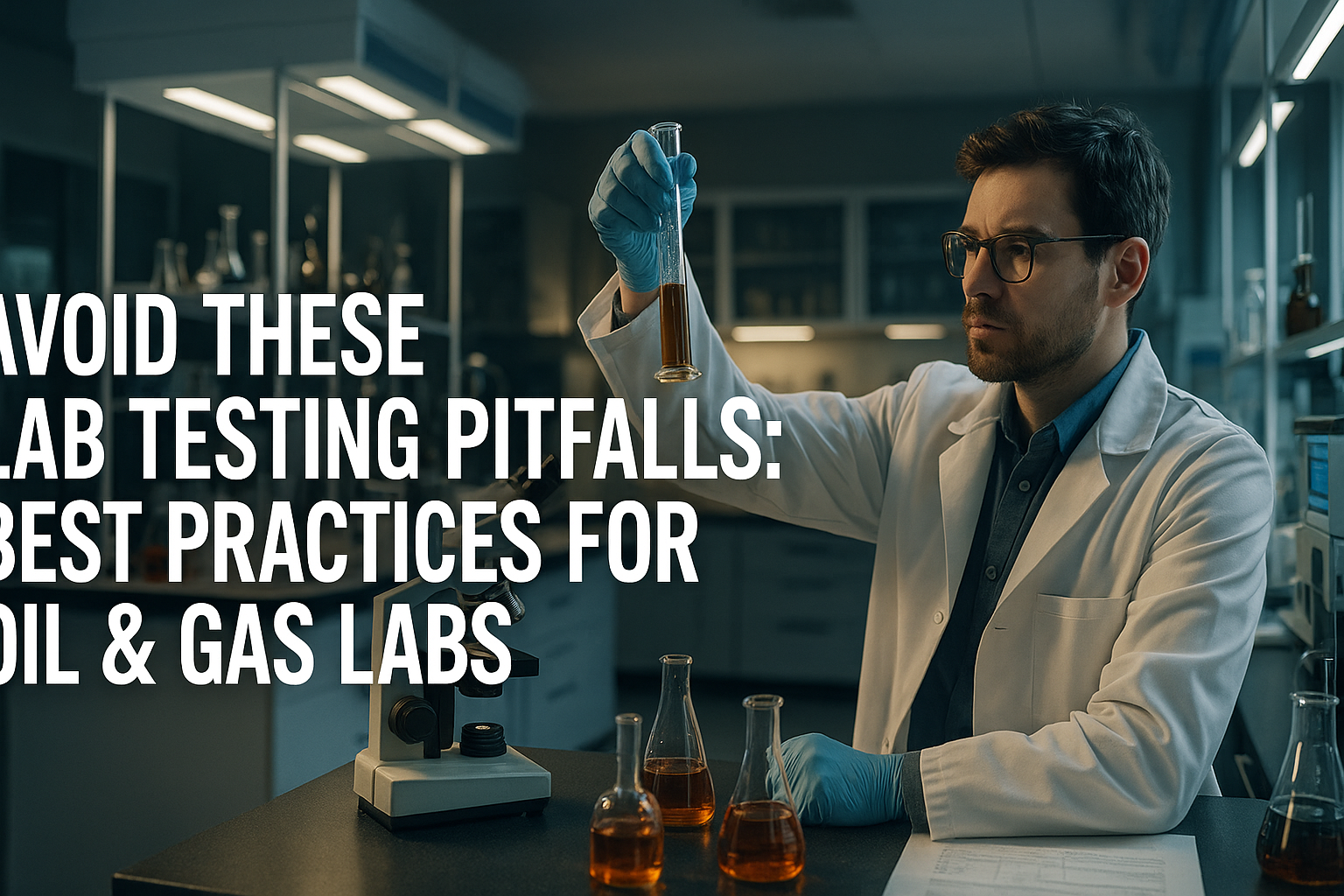Avoid These Lab Testing Pitfalls: Best Practices for Oil & Gas Labs
The Moment Everything Went Wrong: A True Lab Testing Failure
The upstream crew hit a gusher. The pressure build was textbook. Everything pointed to a high-value reservoir. But in the lab, weak processes turned clean data into chaos. By the time faulty results were caught, the drill had already been redirected—millions lost, credibility blown, and someone got walked out.
This isn’t a worst-case scenario. It’s Tuesday in too many oil and gas labs.
Why Lab Managers Lose Sleep: Mistakes, Delays, and Compliance Gaps
As a lab manager, you live between two fires. On one side, ops wants real-time results that don’t hold up production. On the other, compliance won’t tolerate variation, let alone risk. Fail at either, and you don’t just lose efficiency—you lose trust.
And when a bad test result feeds the wrong decision? That’s on you. Whether it was bad data entry, lazy prep technique, or equipment drift, it all shows up under your name.
You’re Not Alone—And You Don’t Have to Solve It Alone
At Dream Beyond, we’ve walked labs through the worst. The ones that were shut down after audits. The ones that hemorrhaged clients after a batch recall. We’ve also helped them bounce back faster than their competitors could believe.
We’re not another software vendor selling dashboards. We’re lab veterans turned strategic partners. We know which tweaks drive measurable results—and where the noise is.
Core Best Practices for Oil & Gas Lab Testing
These aren’t fluffy frameworks. They’re tested, repeatable, and built for real-world pressure. Let’s break down what separates high-performing oil and gas labs from the ones surviving quarter to quarter.
1. Standardize for Speed Without Sacrificing Precision
Every variation—human or mechanic—is a liability. Labs that build bulletproof SOPs with smart variation thresholds see a 3x drop in re-tests. The key: codify workflows, then stress test them. Don’t just document. Practice. Refine.
What you tolerate becomes your standard. If one tech wipes vials clockwise and another goes counter, it matters more than you think.
2. Automate Where It Matters Most
Lab automation doesn’t mean robots in white coats. It means removing mind-numbing tasks that introduce error: barcode scanning, result transcription, pipette tracking. We’ve seen labs recover 4 hours a day just by digitizing chain-of-custody logs.
Think of automation as error insurance. The cost of a mistake in petroleum analysis isn’t inconvenience. It’s litigation.
3. Adopt Tiered Data Validation Protocols
Double-checking isn’t a luxury. It’s essential. And not all checks should be created equal. Set up a three-tier validation:
– Tier 1: Technician review (self-checks)
– Tier 2: Peer QA check
– Tier 3: Manager sign-off for critical samples
This simple shift cut critical errors by 74% in one year at a West Texas geochem lab we trained.
4. Build a Feedback Loop Between Field and Lab
When upstream teams get garbled reports or vague QC notes, they stop trusting your lab. Build an open channel. Create a standing 15-minute debrief with ops teams. Share misses. Share wins. Create reporting formats they don’t need to translate.
5. Prioritize Staff Competency Over Credentialing
Certs look impressive. But do the techs understand the why behind the test? One of the biggest blind spots we see: labs hiring based on resumes, not reasoning. Get your team obsessed with understanding.
Most errors don’t come from method gaps. They come from people following instructions they don’t believe in.
Use the Dream Beyond Lab Strategy Compass
We built a diagnostic tool to evaluate lab readiness across five dimensions: accuracy, efficiency, compliance, team capability, and stakeholder trust. Labs that score above 80% see on average:
– 22% increase in validated test throughput
– 31% decrease in QA/QC-related delays
– 95%+ survey satisfaction from internal clients
It’s free for qualified lab managers who book a 30-minute strategy call.
The Cost of Doing Nothing: A Quiet Catastrophe
Failure in oil and gas testing doesn’t always announce itself with drama. Sometimes it’s the leaking dollar: the field engineer adjusting drilling based on stale sulfur data, the wrong core flagged for petrography, the silent loss of operator confidence.
Delayed reports lead to downgraded contracts. That eats trust—and revenue.
Proof That Performance Can Be Repeatable
A client in Alberta trimmed their average turnaround from 5.6 to 3.2 days. Not by overworking techs. But by pairing process audits with role-based microtrainings. Another in the Permian cut re-samples by implementing a single pre-rinse SOP change. Neither upgrade cost more than a maintenance call.
Your Next Step to Turning Your Lab Into a Strategic Asset
You’ve made it this far because you care about getting it right. But reading about best practices isn’t the same as turning them into routines. Let’s make this real.
Book a no-strings lab performance consultation. You’ll leave with:
– A heatmap of your lab’s biggest testing vulnerabilities
– Practical steps to forge fast gains in accuracy and throughput
– Real benchmarks from labs already ahead of the curve
Give us 30 minutes. We’ll show you what optimization really looks like.
This is your moment to turn your lab from a cost center into a value engine.
FAQs: What Lab Managers Ask Before Making a Move
Q: What if our lab is too small to justify automation?
A: You don’t need a full overhaul. Even digitizing logbooks or automating sample intake saves hours weekly. Small labs benefit even more from small wins.
Q: We’re locked into legacy systems. Isn’t change risky?
A: Change is only risky without a roadmap. We specialize in building staged upgrades that align with your current workflows and budget.
Q: What if my team resists new processes?
A: Resistance usually comes from fear. We work hands-on to coach your team through changes with clear roles, context, and buy-in. Most labs report improved morale after implementation.
Internal links:
– /services/lab-optimization
– /resources/lab-performance-checklist
– /about-us

